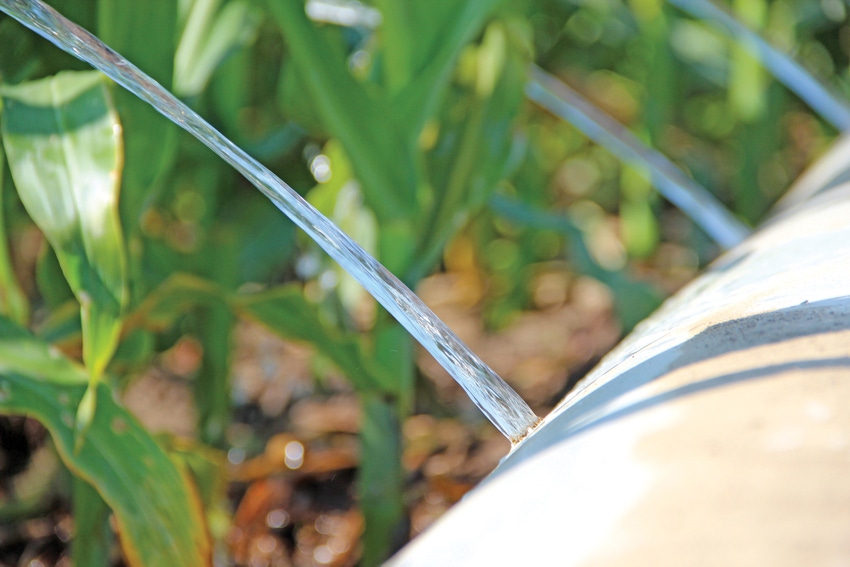July 20, 2012

Arkansas’ corn crop, a few dry days away from harvest, is in much better shape than the rest of the nation. However, the drought gripping other parts of the Corn Belt is raising prices and questions about whether there will be enough corn nationally to meet the country’s ethanol mandates.
Strong prices helped push U.S. corn acreage in 2012 to its largest area since 1937. However, drought is withering non-irrigated acreage in other states, sparking fears there may not be enough corn for livestock and ethanol.
“The acreage was certainly sufficient, but the yield is not,” Scott Stiles, Extension economist for the University of Arkansas Division of Agriculture, said Thursday. “Over the past month, corn prices have begun the rationing process. One month ago, June 18, the September futures contract settled at $5.37. Wednesday it traded as high as $7.97 -- up almost 50 percent in a month.”
On Thursday, September corn was up 15 cents to near $8.10.
REPORT: On the precipice: severe drought, declining yields, marketing advice
“Ethanol is the largest segment of U.S. corn demand now. The surge in corn prices has forced some ethanol plants to shut down and some are even liquidating their corn inventories. That’s the only profitable thing they can do at this point.”
Agriculture Secretary Tom Vilsack met with President Obama on Wednesday about the drought and no decision was made about reducing or waiving the ethanol mandate, an issue that arose during last year’s drought.
REPORT: Vilsack prays for rain, wants Congress to aid ag producers
Stiles said livestock producers must travel beyond the borders for feed.
“Importers around the world do have alternative sources of feed. These can be found either in the form of other grains or from other origins such as Australia, Russia and the Ukraine. In fact, southeastern U.S. livestock producers have started importing Brazilian corn. Feedlots in Texas and other parts of the Southwest are replacing corn with wheat.”
Irrigation distinct advantage
Irrigation has given Arkansas corn growers a distinct advantage this year.
“The U.S. corn crop conditions peaked in early June and have declined weekly since then,” Stiles said.
The National Agricultural Statistics Service said 72 percent of the crop was rated good to excellent on June 3.
“Today, that percentage is 31. That is the lowest crop rating since 1988 for this time of year.”
In Arkansas, Monday’s NASS report has 63 percent of the state’s corn crop in good or excellent condition. A full 12 percent of the crop was mature, “unprecedented in the last five years,” Stiles said.
The fact that demand is slowing is the key argument that prices may be at or near the peak.
“Currently, futures prices are trading close to the record highs seen in June 2011,” Stiles said. “Last year, corn futures nearly hit $8 and today’s high so far has been $7.97. Where we go from here will be uncharted territory.
“Some chart technicians predict the September contract still has another 50 cents to $1 per bushel of upside, but, for now, the market has to penetrate last June’s high.”
REPORT: Drought could lead to crop delivery problems
The rationale for higher prices depends on the weather for the balance of July. August will be a critical month, but one that’s more important to the soybean market. Based on the weather outlook Wednesday, it does appear that yield estimates for the U.S. crop could decline more. Much of Iowa, Nebraska, and South Dakota are expected to see temperatures around 100 degrees next week. Parts of Nebraska have lost the ability to irrigate due to the dry conditions.
A handful of acres were harvested last week in Jefferson County, but much of the state’s corn is waiting out a few sunny, dry days to ensure the kernels are as near to 15 percent moisture as they can be before the combines run. Farmers in Chicot County planned to try harvesting Monday or Tuesday, but the weekend rain slowed the drying.
For more information on coping with drought, visit Arkansas Drought Resources here or contact your county Extension office.
You May Also Like




